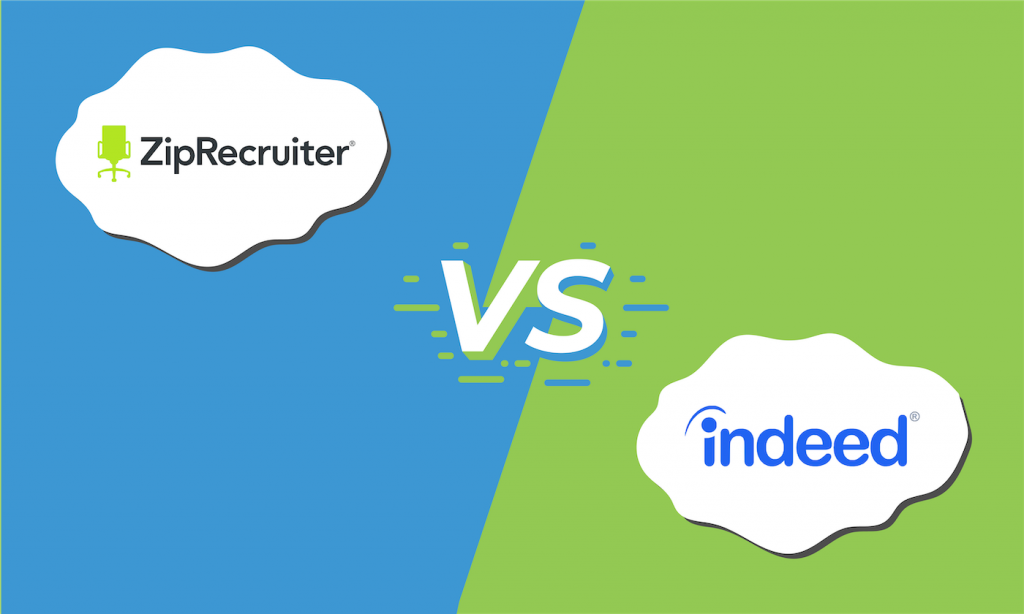Key takeaways
- The bare HR essentials for startups include:
- Recruiting and hiring procedures.
- Creating a company handbook.
- Managing documents.
- Administering payroll and benefits.
- Ensuring workplace safety and accommodations.
- A startup needs HR because it boosts employee retention, keeps it compliant, and prepares the organization and workforce for growth.
- You need to define your startup’s business objectives, establish core HR processes, familiarize yourself with labor laws, develop your long-term workforce plan, and choose the right HR software.
- Jan. 13, 2025: Irene Casucian rewrote most of the article to explain a startup’s basic HR needs comprehensively. She also revised the software recommendations and updated the formatting to improve readability and the visual flow of information.
Do startups need HR?
In short, all businesses need human resources (HR), including startups. A startup is a lot of work—from drumming up funding to strategizing marketing campaigns and maintaining day-to-day business operations, it’s easy to overlook your HR needs. However, building your HR can set a good foundation for your organization by:
- Reducing turnover: When you have a reliable HR in place, employees will feel valued, engaged, and motivated, boosting employee retention and reducing employee turnover.
- Keep business compliant: Setting up your startup’s HR keeps your business compliant with all relevant laws and regulations.
- Supports your company’s long-term goals: Through careful strategic HR planning, you can support your company’s long-term goals by setting clear policies and creating scalable processes that align with your business objectives.
What are the important HR requirements for startups?
The main HR requirements every startup needs include:
- Recruiting and hiring talented individuals.
- Creating a detailed company handbook.
- Organizing records through document management.
- Handling payroll and benefits efficiently.
- Ensuring workplace safety and accommodations.
Recruiting and hiring procedures
Through effective recruiting and hiring procedures, you can make sure that you have the right people that suit your headcount plan. A headcount plan ensures you are meeting your minimum staffing levels to keep your business running. You don’t want too few employees because then you’ll be overwhelmed and unable to serve your customers properly. Likewise, you also don’t want too many employees because that would be a waste of money.
You can utilize a platform like Indeed Smart Sourcing to help you find talent and streamline the recruiting process. This tool helps you instantly match and connect with quality candidates from a vast pool of job seekers. It offers different subscription plans catering to varying hiring needs and budgets. If you’re looking to maximize your visibility and attract top talent quickly, Indeed also provides options to sponsor job posts, which can significantly increase your reach and the speed of finding the right candidates
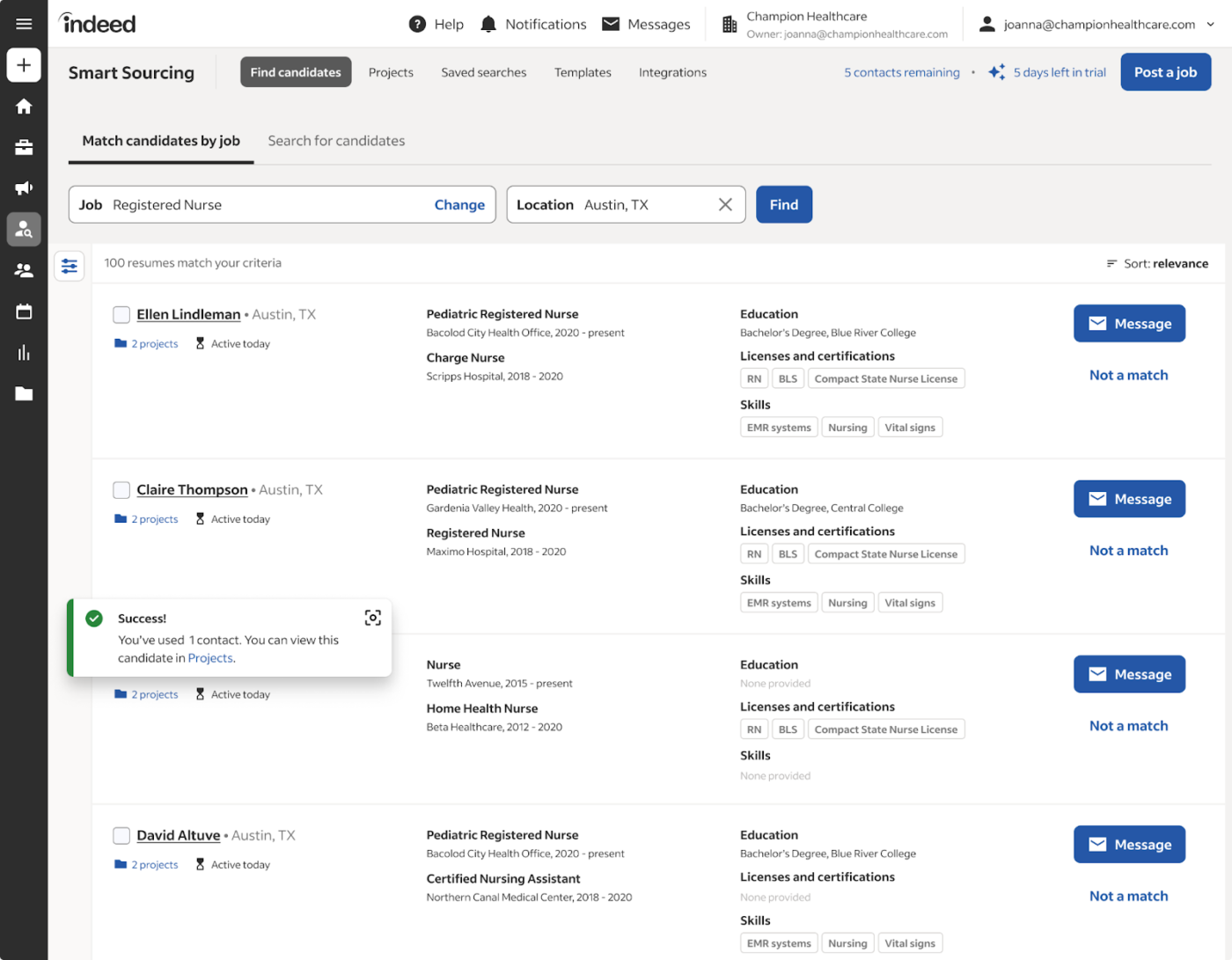
Employee handbook
An employee handbook gives your employees a comprehensive overview of the company’s policies, goals, and procedures, plus guides them on what to expect in the workplace. By making sure that the contents of the handbook comply with laws and regulations, it reduces the risk of legal disputes. It also simplifies dispute resolution because it stipulates grievance procedures. Lastly, it enforces DEI by ensuring that the policies are applied consistently across the organization.
At a minimum, your employee handbook should have:
- A welcome message defining your company’s culture and values.
- Employment policies outlining your work processes.
- A code of conduct that also explains disciplinary procedures and how to raise concerns.
- Health and safety procedures.
For compliance, you should also provide a page where employees can sign to verify that they have read and understood the handbook’s contents.
Startups should consult legal experts to ensure compliance when crafting an employee handbook. While this may not seem cost-efficient at first, it is a good investment in the long run compared to the risk of a lawsuit.
Read our employer’s guide to drug testing in the workplace to learn more about creating a safe and compliant work environment.
Document management
Document management involves storing, managing, and tracking electronic documents. This also includes having a system for handling digital files to ensure they are organized and secure. Effective document management and record-keeping helps your company stay compliant because they assist with document retention requirements and speed up auditing processes. Document management also streamlines core HR processes, like payroll, benefits administration, and time tracking.
Through secure document management, you can keep your data safe and protected, especially when dealing with sensitive information such as employee data, proprietary business information, and customer data. Zoho People is a highly scalable HR software that provides a centralized repository for all HR documents, making it easier for you to access and manage them. It also guarantees that only the right people can access these documents by allowing you to customize permissions and access control.
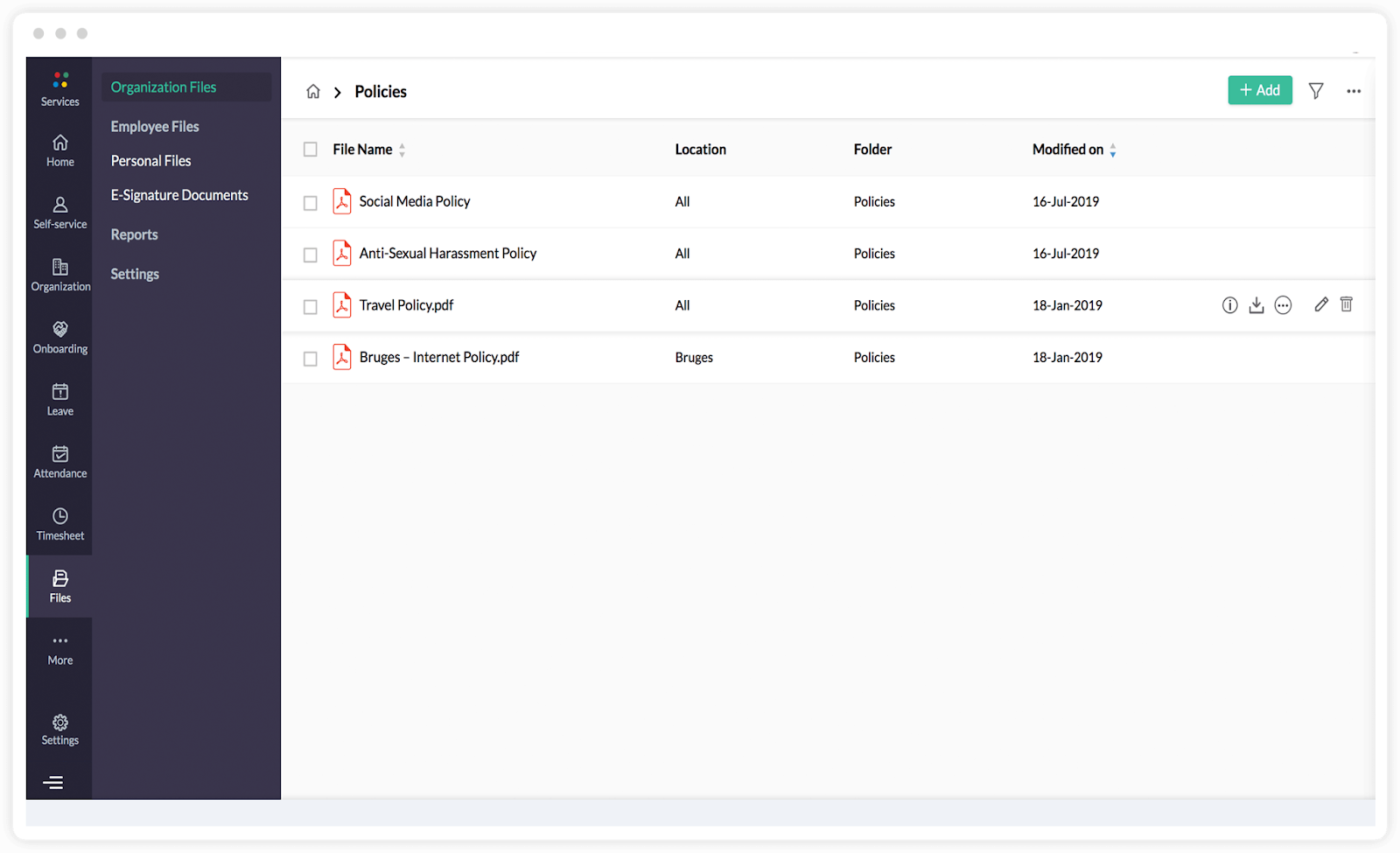
Payroll and benefits
Payroll and benefits are critical to your startup for compliance, accounting, and employee retention. But these also represent significant costs, so proper budgeting and forecasting for these expenses are crucial to secure financial stability and support growth.
Your workers also depend on timely and accurate payrolls for their livelihood so payroll compliance should be your top priority. This means adhering to local, state, and federal laws related to employee payments, worker classification, tax withholdings, and benefits administration. It also involves accurate time-tracking and scheduling procedures to ensure your workers are properly compensated for overtime and take legally mandated breaks.
Your benefits compliance should factor in laws such as the Affordable Care Act (ACA), the Employment Retirement Income Security Act (ERISA), Family and Medical Leave Act (FMLA), and the Health Insurance Portability and Accountability Act (HIPAA).
While these may seem like a lot, a beginner-friendly payroll software can help you get started and streamline your startup’s payroll management. Gusto, for example, can automate payroll, help you register your business in your state, and calculate, file, and pay payroll taxes on your behalf.
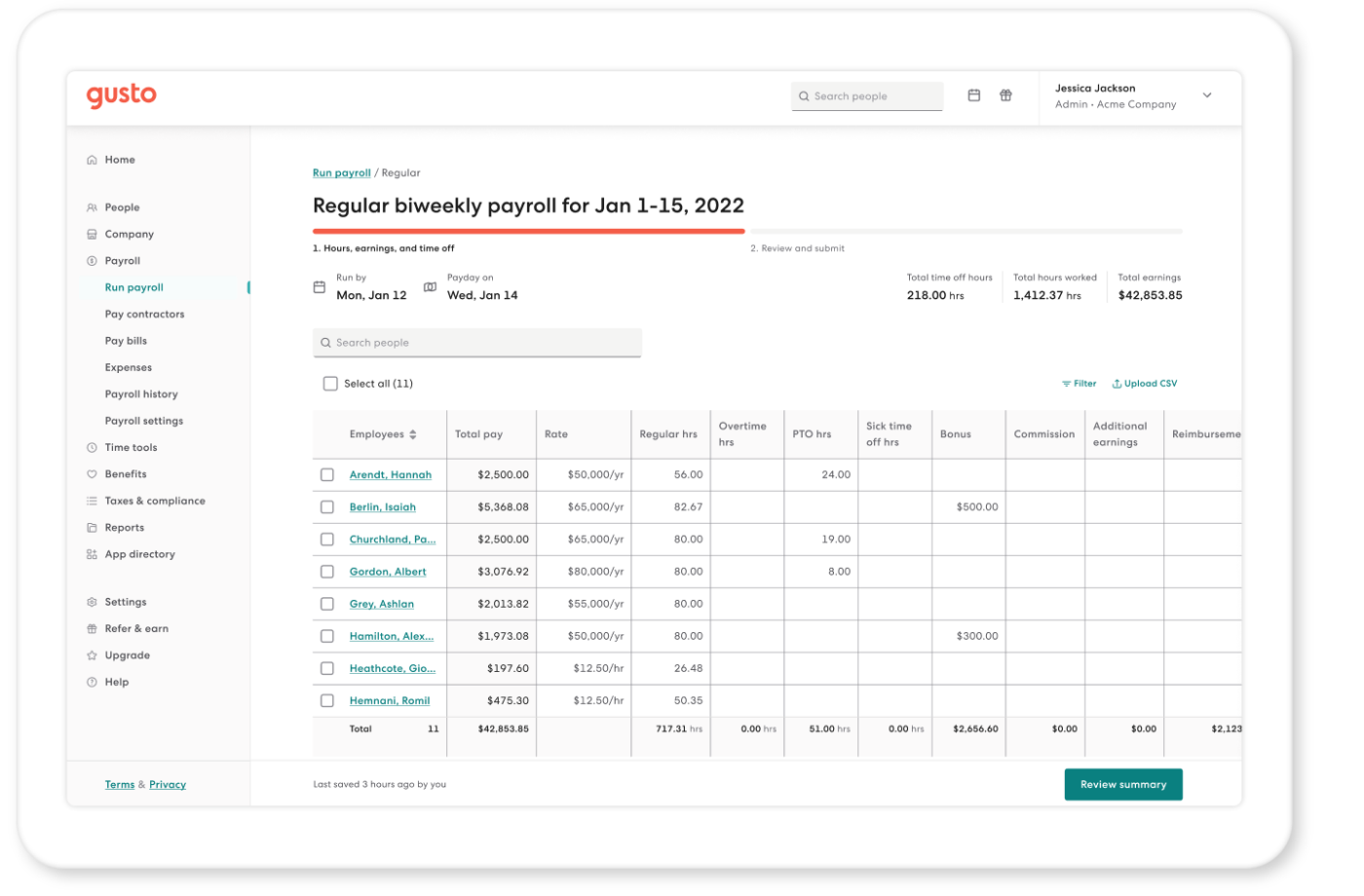
Read our guide on how to do payroll yourself and learn about the essential steps and tips for handling payroll independently.
Workplace safety and accommodations
Creating a safe workplace is both your legal and ethical responsibility. The Occupational Safety and Health Administration (OSHA) mandates the standards of a safe and healthy work environment. These entails legal requirements like developing a written emergency action plan, plus protective equipment and training for certain industries.
As a startup, you may have limited resources, but you can start with these steps:
- Evaluate the workplace for potential safety hazards.
- Educate employees about safety protocols and emergency procedures.
- Conduct drills to make your employees know how to respond in an emergency.
Learn more about your responsibilities under OSHA and industry training requirements.
Aside from workplace safety, providing accommodations for employees with disabilities is also a legal requirement under Americans with Disabilities Act (ADA). It also supports DEI in your workplace. These accommodations can range from ramps, modified restrooms, and parking spaces to flexible working schedules and temporary leaves of absence.
More resources
Check out these articles to enhance your knowledge on workplace safety and accommodation:
How do you build an HR department in a startup?
Building an HR department can be divided into these five steps.
1. Establish clear objectives and understand business needs
First, you should set your HR department’s goals and align them with your startup’s objectives. HR acts as the middle person between the needs of employees and the company’s vision. By understanding the company’s vision, the HR team can develop compliant policies, procedures, and training resources that support the employees and the organization’s long-term goals. Establishing these objectives will give you a clear understanding of your growing business needs and identify the following:
- What kind of talent do you need?
- What kind of structure do you require to support your startup?
- What kind of policies and procedures do you need to create?
- What kind of compliance gaps need addressing?
The answers to these questions are the pillars in building your HR department.
2. Start with HR fundamentals
Now that you have your HR objectives, it’s time to cover the HR fundamentals:
- Recruitment and hiring.
- Onboarding and training.
- Compensation and benefits.
- Performance management.
- Employee development.
Depending on time and resources, you may not be able to realistically implement all of these in-house. If that’s the case, HR outsourcing could be a good stepping stone before hiring internal HR talent. Through HR outsourcing, you can delegate complex HR tasks such as payroll processing, benefits administration, and compliance management to outside firms to free up time and focus on your business.
Expert Tip
Read our professional employer organization (PEO) and employer of record (EOR) service guides to explore comprehensive solutions for managing HR functions. These resources provide valuable information on leveraging professional employer organizations and EOR services to streamline your HR processes and guarantee compliance.
3. Ensure labor law compliance
One of the first initiatives of your HR department is to make sure your startup complies with employment laws. Some of these regulations include:
- Wage and hour laws.
- Anti-discrimination laws.
- Health and safety regulations.
- Employee benefit laws.
Most HR software includes features to help you stay on top of these items. For example, TriNet HR Platform will automatically notify you about compliance deadlines, such as tax due dates and new federal wage and hour changes.
The work doesn’t stop there. Scheduling regular internal HR and payroll audits can help you improve process efficiency and keep you up to date with changing laws.
4. Leverage HR software
While HR software can’t replace an HR department, it can significantly enhance its efficiency and help secure compliance with regulations—something critical for startups. In deciding on the HR software for your startup, you can choose between a comprehensive HR software or a limited function HR. Comprehensive HR software covers a wide range of functions, including recruitment, onboarding, payroll, benefits administration, performance management, and compliance tracking. It is ideal for startups aiming for scalable HR solutions that can grow with the company.
On the other hand, limited-function HR focuses on specific tasks such as payroll or time tracking. These tools are simpler and often more affordable but lack the broad functionality of comprehensive systems. Limited-function software can be an excellent choice if you have a small startup with fewer employees and simpler HR needs.
A good example of a comprehensive HR solution is GoCo. GoCo allows startups to pick and choose from its features according to their current requirements. This flexibility is ideal for startups that anticipate scaling and evolving demands.
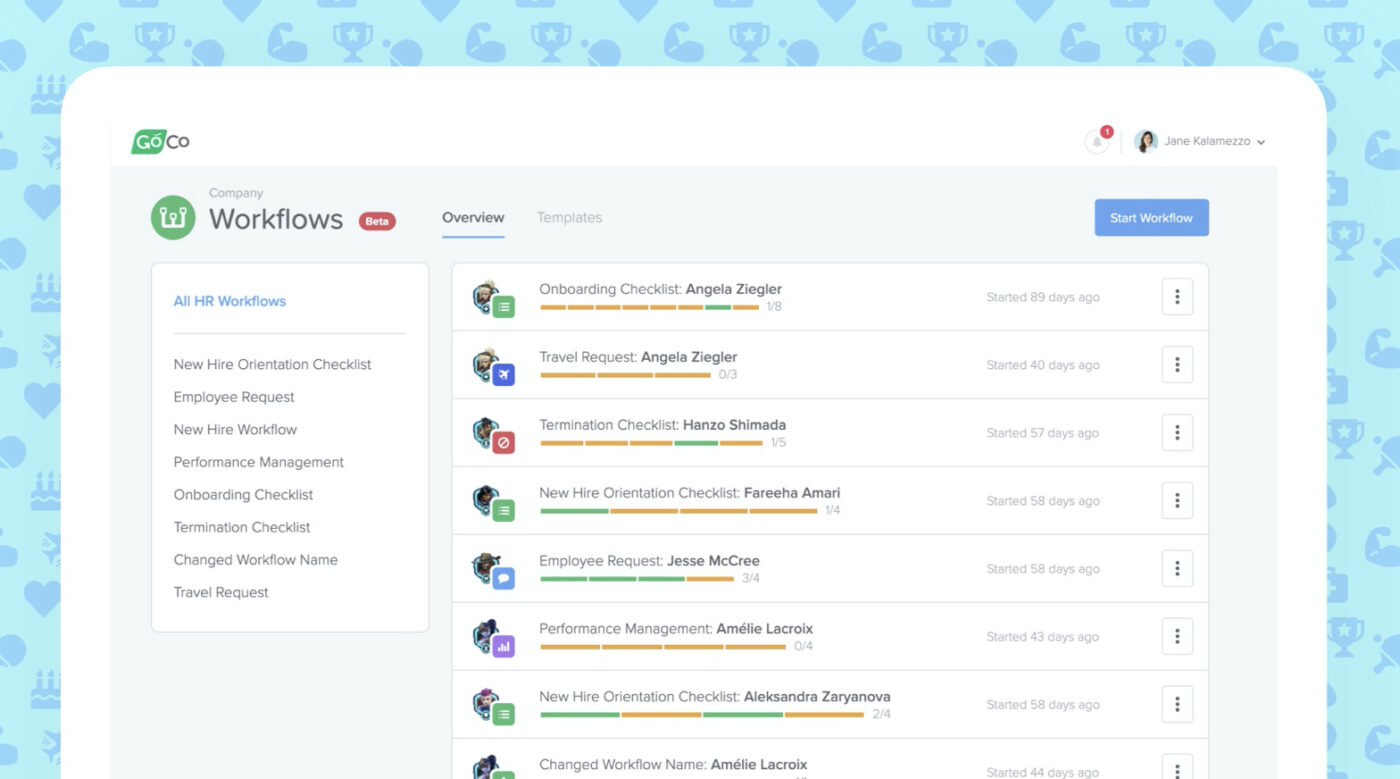
Meanwhile, 7shifts is a limited-function HR that focuses on scheduling and time tracking. If you have recently opened a restaurant, 7shifts has automatic scheduling features and a user-friendly interface that is easy to learn and navigate.
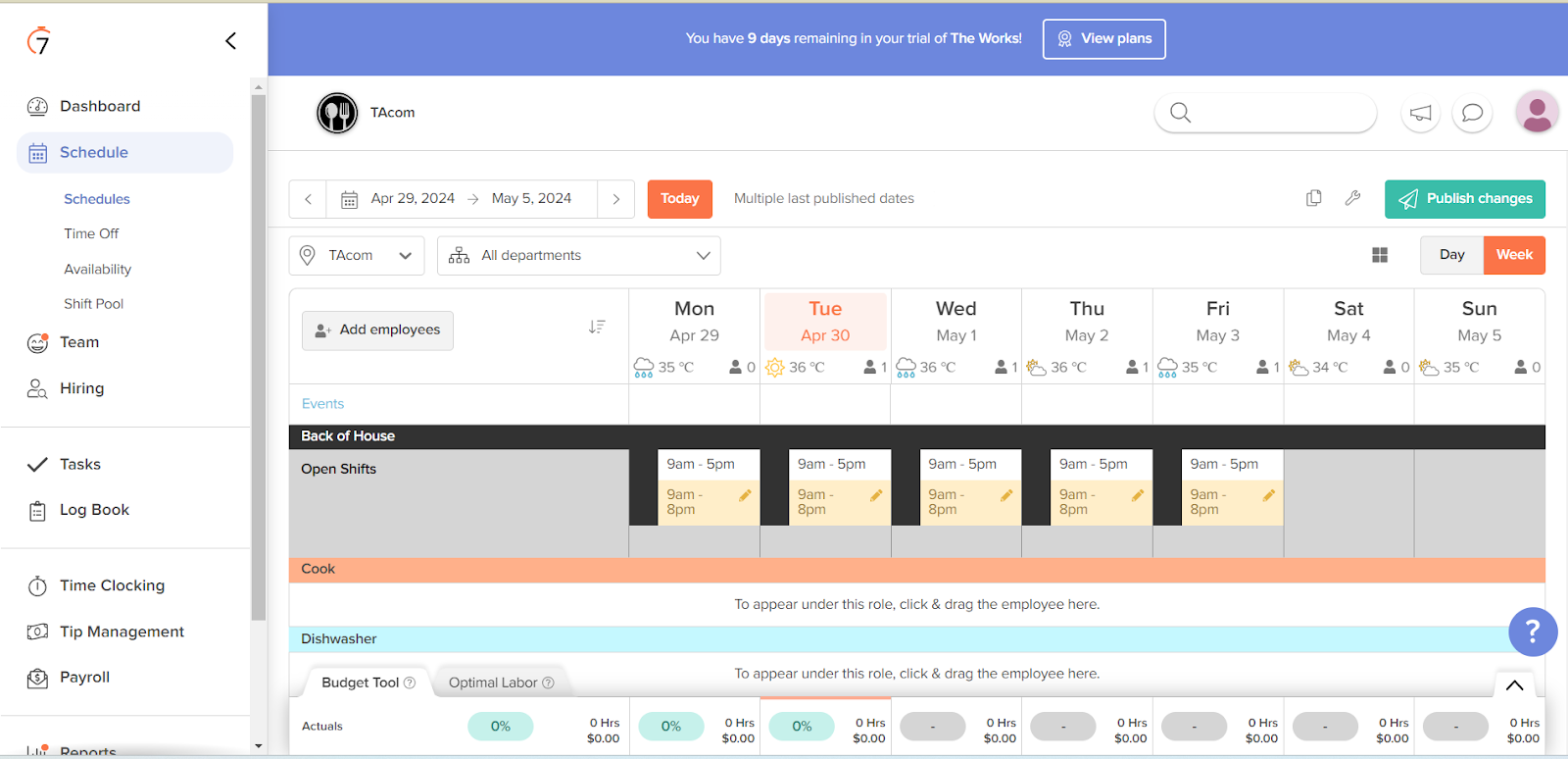
More HR software guides
Limited-function HR is just one type of human resources information system. Here are some of our top guides to help build your startup’s HR tech stack:
5. Work on a strategic HR plan
Strategic HR planning involves looking beyond day-to-day operations and setting a path for your startup’s growth. Part of this is making scaling plans, which means preparing the HR department to handle the company’s future needs.
Consider your future hiring sourcing needs, create training programs to develop the skills of your existing workforce, and analyze workforce data to understand costs, skills gaps, and process deficiencies.
In the early stages a business, the HR department primarily focuses on compliance and administrative tasks such as setting up payroll and benefits and ensuring adherence to labor laws. As your organization grows and priorities shift toward expansion and market penetration, HR teams evolve to emphasize workforce planning, talent development, and retention strategies. This strategic shift supports the business’s changing needs, helping to cultivate a skilled, engaged, and adaptable workforce that can drive the company forward in its developmental journey.
Strategic planning resources for HR
For more strategic HR planning tips, see our list of resources below:















